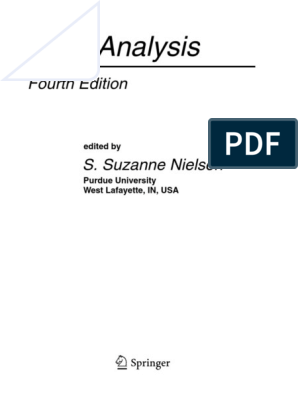100% found this document useful (1 vote)
565 views19 pagesFood Moisture Analysis Guide
This document discusses methods for analyzing moisture and total solids content in foods. It covers topics like water properties, sample handling, direct moisture measurement techniques like oven drying and distillation, and calculation of moisture content.
Uploaded by
Moeurng SreylakCopyright
© © All Rights Reserved
We take content rights seriously. If you suspect this is your content, claim it here.
Available Formats
Download as PPTX, PDF, TXT or read online on Scribd
100% found this document useful (1 vote)
565 views19 pagesFood Moisture Analysis Guide
This document discusses methods for analyzing moisture and total solids content in foods. It covers topics like water properties, sample handling, direct moisture measurement techniques like oven drying and distillation, and calculation of moisture content.
Uploaded by
Moeurng SreylakCopyright
© © All Rights Reserved
We take content rights seriously. If you suspect this is your content, claim it here.
Available Formats
Download as PPTX, PDF, TXT or read online on Scribd
/ 19

























































































